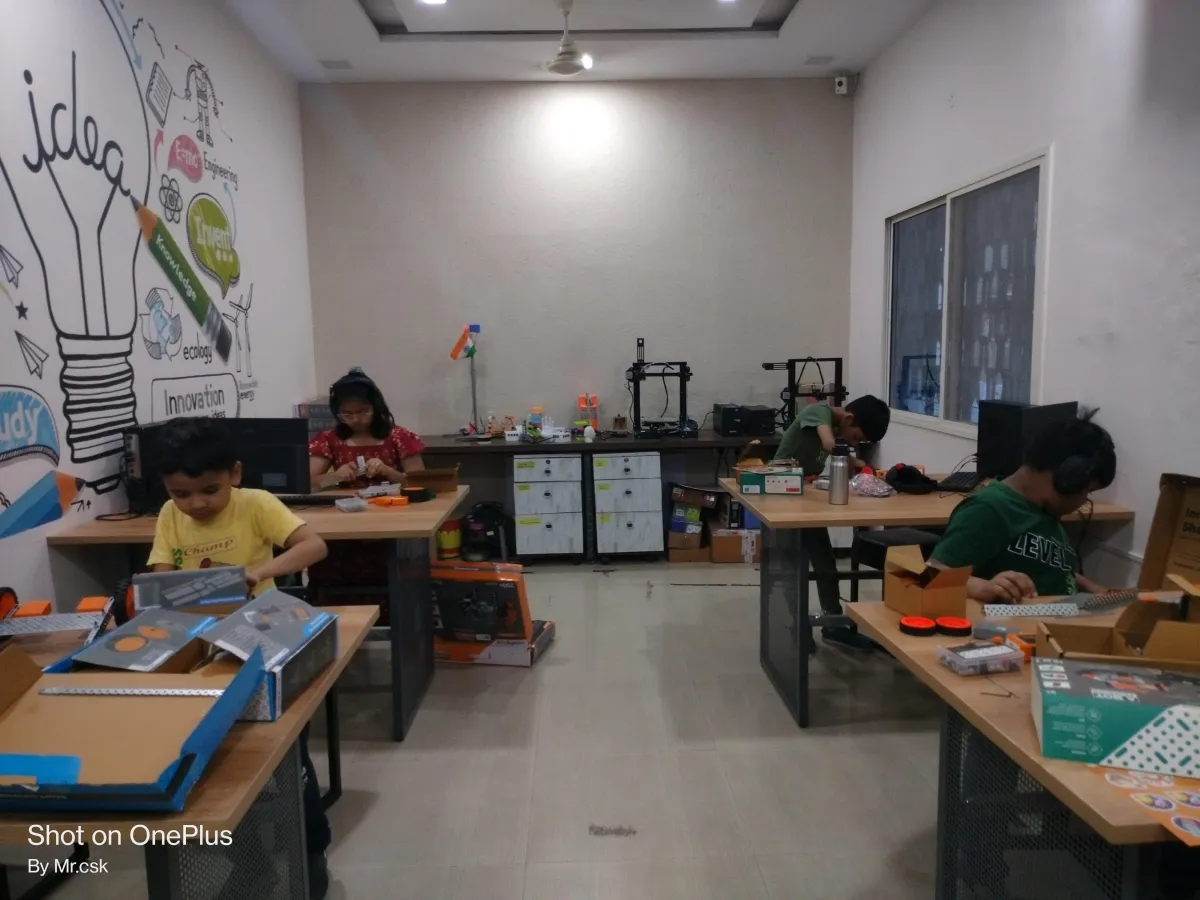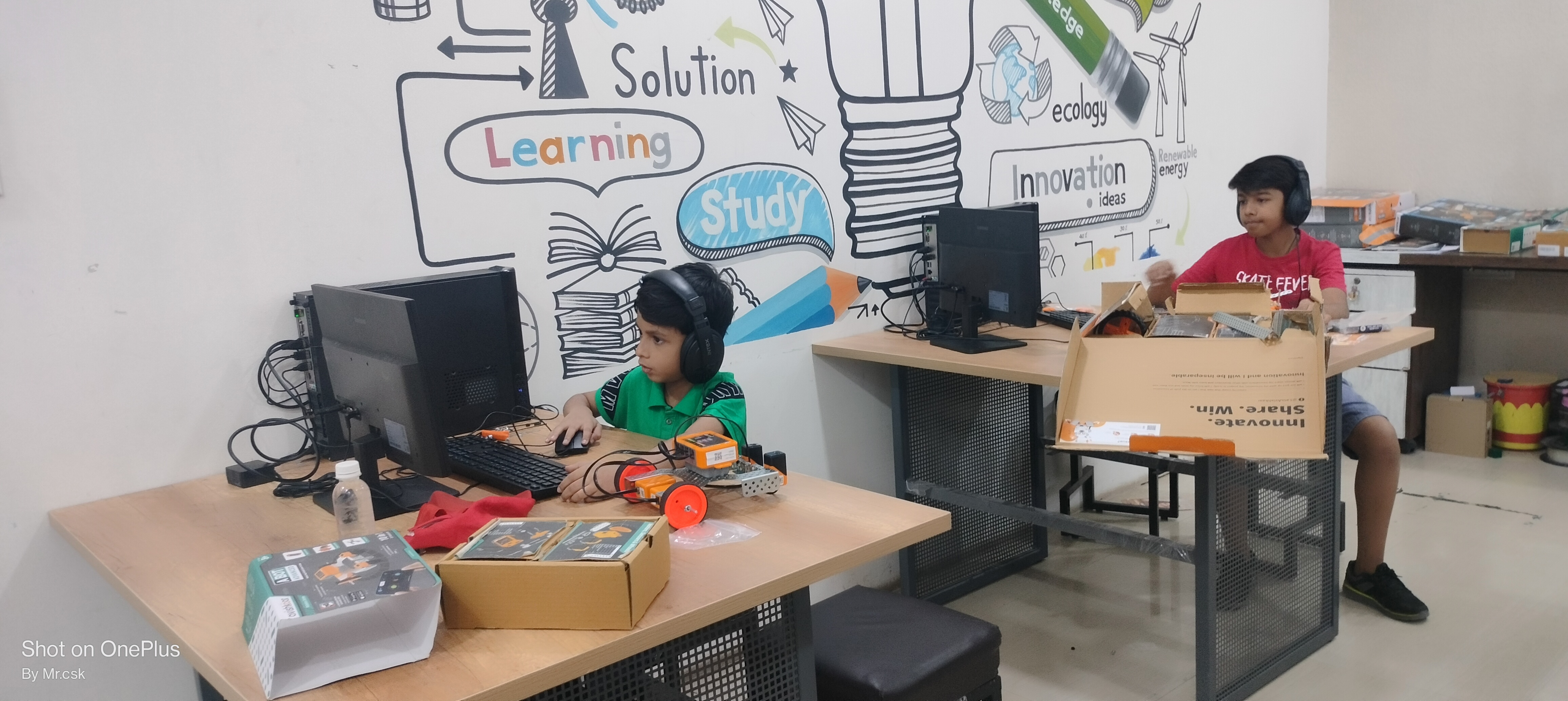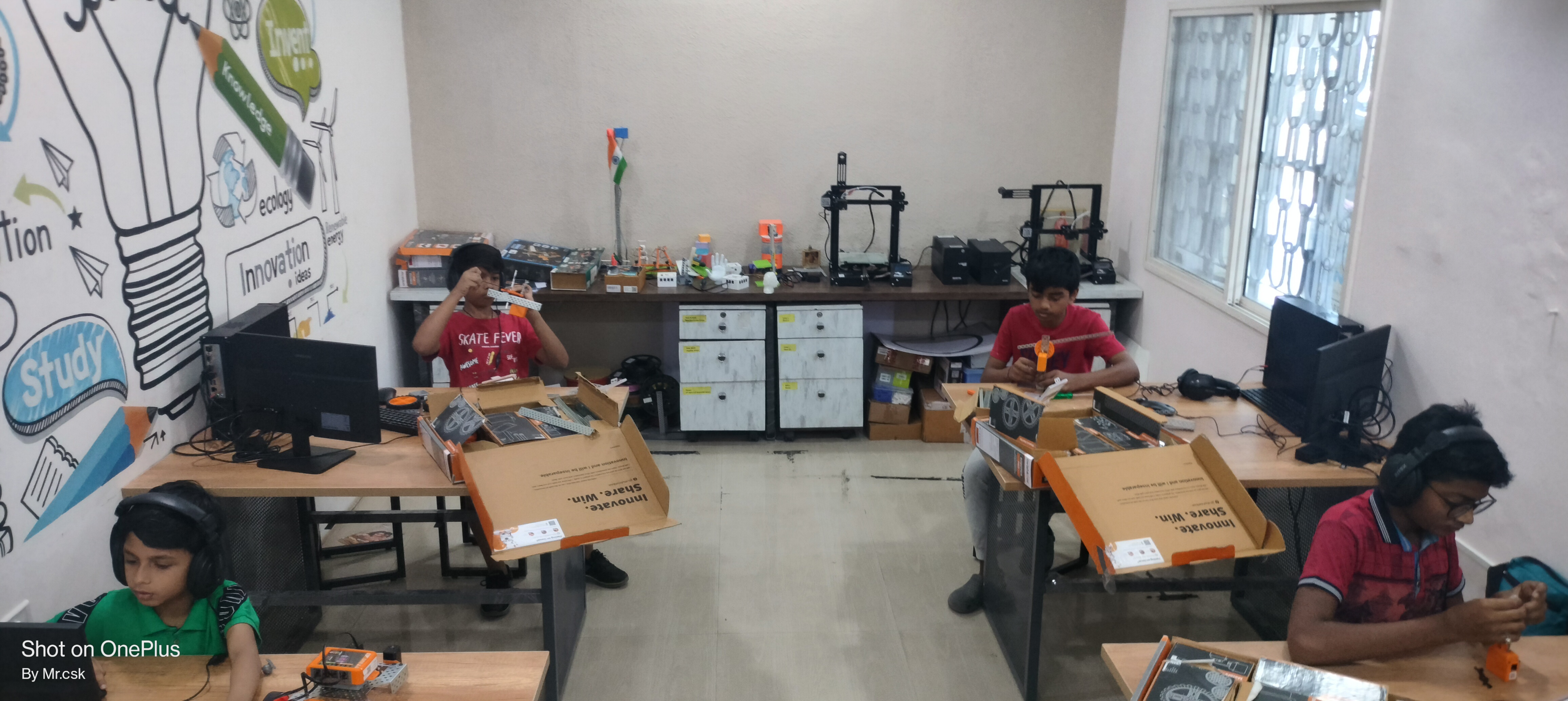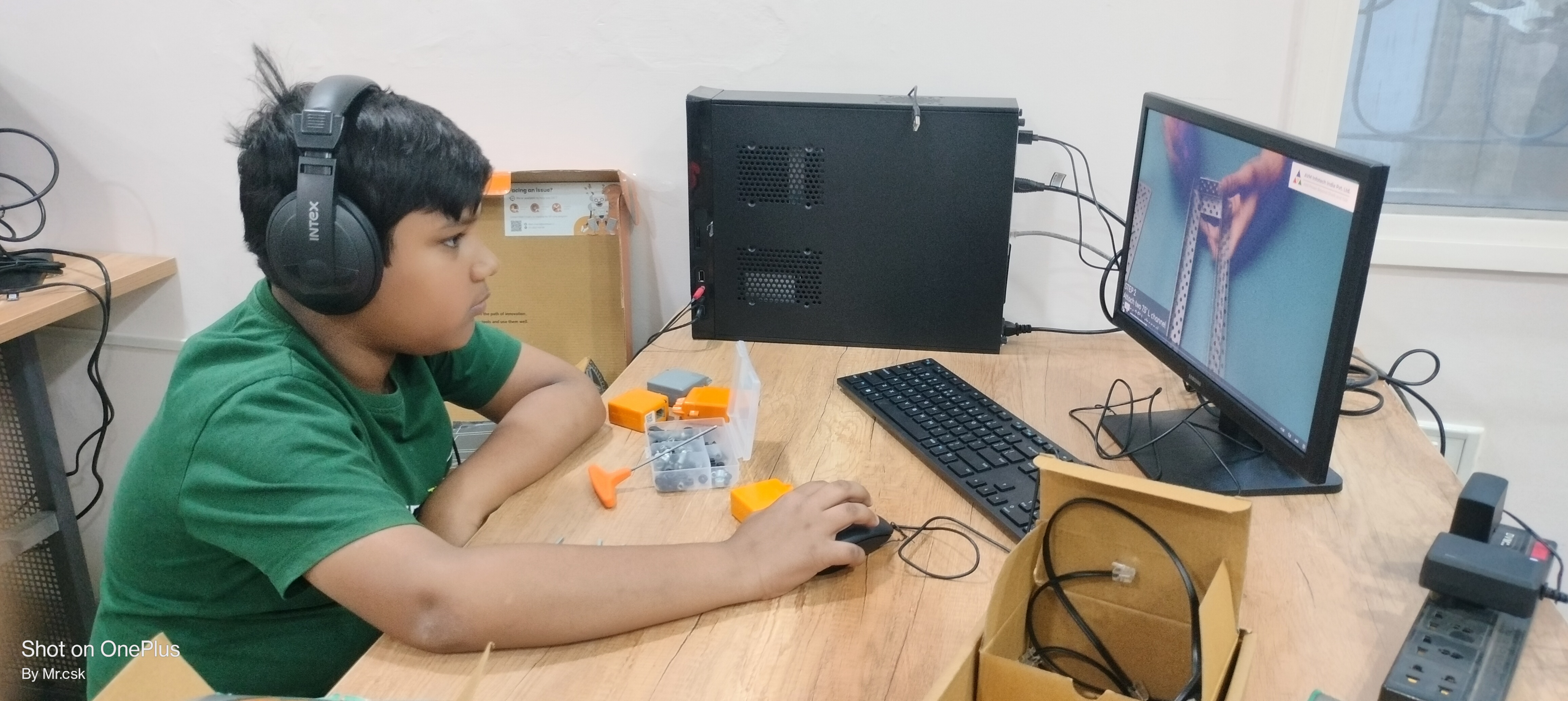BLOGS

The Future of Education: How Smart Classrooms Are Revolutionizing Learning
In today's rapidly evolving digital landscape, technology has become an integral part of our daily lives, influencing various aspects, including education.
As classrooms transition from traditional setups to innovative learning environments, the concept of "smart classrooms" has emerged as a beacon of change in the educational sector.
But what exactly are smart classrooms, and how are they shaping the future of education? Here, we'll explore the concept of smart classrooms and their impact on education, from their evolution to their key features and benefits.
What is a Smart Classroom?
The term "smart classroom" refers to a modern educational space equipped with interactive technology and digital tools designed to enhance teaching and learning experiences. These classrooms leverage multimedia displays, digital content, and collaborative tools to create dynamic and engaging learning environments that cater to diverse learning styles.
In essence, smart classrooms represent the future of education, where technology serves as a catalyst for innovation and transformation.
The Evolution of Education Technology
Over the years, technology has transformed the way we teach and learn. From the introduction of computers in classrooms to the widespread use of interactive whiteboards and digital content, educators have embraced technology as a tool to enhance learning experiences. Smart classrooms represent the next evolution in this journey, integrating cutting-edge technology seamlessly into the learning process.
Importance of integrating technology into the classroom
Integrating technology into the classroom is essential for preparing students for success in the digital age. In today's interconnected world, technological literacy is no longer optional but necessary for navigating daily life and participating in the workforce.
By incorporating technology into lessons, educators can create more engaging and interactive learning experiences that cater to diverse learning styles.
Technology also provides access to a wealth of educational resources and information, allowing students to explore topics in depth and at their own pace.
Moreover, technology facilitates collaboration and communication, enabling students to work together on projects and connect with peers and experts from around the world.
Ultimately, integrating technology into the classroom empowers students to become critical thinkers, problem solvers, and lifelong learners in an increasingly digital society.

Key Features of Smart Classrooms
A. Interactive Whiteboards and Multimedia Displays
One of the central features of smart classrooms is the integration of interactive whiteboards and multimedia displays. These advanced technologies replace traditional blackboards and projectors, allowing educators to present content in dynamic and engaging ways. Interactive whiteboards enable teachers to interact directly with digital content, annotate materials, and facilitate interactive lessons. Multimedia displays enhance visual learning experiences by incorporating videos, animations, and interactive simulations, making lessons more immersive and memorable for students.
B. Digital Content and Educational Software
Smart classrooms are equipped with a wide range of digital content and educational software tailored to support teaching and learning objectives. These resources include digital textbooks, e-books, educational videos, simulations, and interactive learning modules. Digital content provides educators with access to a wealth of resources and materials to enhance their lessons and cater to diverse learning styles. Educational software offers interactive tools and applications that engage students and promote active learning, fostering critical thinking, problem-solving, and collaboration skills.
C. Collaborative tools and online resources
Collaboration is a key component of smart classrooms, facilitated by collaborative tools and online resources. These tools enable students to work together on projects, share ideas, and collaborate with peers and educators in real-time. Online resources such as virtual classrooms, discussion forums, and cloud-based storage platforms allow for seamless collaboration and communication, regardless of physical location. By fostering collaboration, smart classrooms promote teamwork, communication, and interpersonal skills essential for success in the digital age.
D. Personalized Learning Experiences
One of the most significant advantages of smart classrooms is the ability to provide personalized learning experiences tailored to individual student needs and preferences. Personalized learning experiences empower students to take ownership of their learning journey, enabling them to learn at their own pace and in ways that best suit their learning style. By catering to individual needs, smart classrooms maximize student engagement, motivation, and academic achievement.
E. Advanced Labs and Training Facilities
Smart classrooms often include specialized labs and training facilities for subjects like Robotics, AI, Coding, Tinkering, Design Technology, STEM, and Innovation. These labs provide hands-on experiences and practical learning opportunities, fostering creativity, problem-solving skills, and innovation among students.
Additionally, Language Labs for both English and Foreign Languages offer immersive language learning experiences, enhancing communication skills. Robotics training programs cater specifically to school children, introducing them to robotics concepts and technologies interactively and engagingly.
Benefits of Smart Classrooms
Enhanced engagement and motivation among students.
Improved learning outcomes and academic performance.
Access to a wealth of digital resources and educational software.
Personalized learning experiences tailored to individual student needs.
Increased teacher effectiveness and efficiency.
Streamlined administrative tasks, freeing up time for impactful teaching practices.
Preparation of students for the digital age workforce with essential 21st-century skills.
Fostering a culture of innovation and collaboration.

Future Trends and Innovations
A. Emerging technologies shaping the future of smart classrooms
The future of smart classrooms is propelled by emerging technologies such as virtual reality (VR), augmented reality (AR), and artificial intelligence (AI). These innovations offer immersive learning experiences and personalized instruction. AI-driven adaptive learning systems will tailor lessons to individual students' needs, while VR and AR will create interactive environments for deeper engagement.
B. Advancements in personalized learning and adaptive instruction
As AI evolves, personalized learning and adaptive instruction will become more refined. AI algorithms will analyze student data to offer tailored learning paths and real-time support. Educators will gain deeper insights into student progress, enabling more effective teaching strategies and interventions.
C. Opportunities for collaboration and global connectivity
The future of smart classrooms encourages collaboration and global connectivity. Online platforms and virtual classrooms will connect students worldwide, fostering cultural exchange and collaboration. Advancements in communication technology will facilitate seamless collaboration, allowing students and educators to share ideas and resources across borders, promoting a more connected and collaborative learning environment.

In summary, smart classrooms represent a transformative shift in education, leveraging technology to create dynamic and engaging learning environments. From interactive whiteboards to personalized learning experiences, smart classrooms offer a wealth of benefits for both educators and students. As we look ahead, the potential for innovation in smart classrooms is boundless, with emerging technologies such as virtual reality and artificial intelligence poised to revolutionize the way we teach and learn.
By embracing the future of smart classrooms and focusing on adaptability and inclusivity, educators and institutions can empower students to reach their full potential and prepare them for success in an ever-changing world.
FAQs
How are smart boards in classrooms revolutionizing education?
Smart boards revolutionize education by making lessons interactive and engaging through multimedia and real-time feedback. They enhance collaboration by allowing multiple students to participate simultaneously and facilitate easy access to digital resources. Additionally, they support digital note-taking and lesson customization, enabling adaptive teaching tailored to students' needs.
How are teacher smartboards revolutionizing education?
Teacher smartboards revolutionize education by enabling interactive and multimedia-rich lessons that capture students' attention. They facilitate real-time feedback and assessment, enhancing lesson adaptability. Collaborative features allow students to engage in group activities directly on the board. Additionally, smartboards streamline lesson planning and digital note-taking, making teaching more efficient and dynamic.
Are online smart classes the future of education?
Yes, online smart classes represent the future of education by offering flexible, accessible learning from anywhere. They integrate interactive tools and multimedia to enhance engagement. Real-time feedback and adaptive learning technologies tailor instruction to individual needs. Additionally, they enable collaboration across distances, breaking down geographical barriers to education.
What is the future of classroom learning with smart boards?
The future of classroom learning with smart boards involves increased interactivity and engagement through multimedia and dynamic content. Smart boards enable real-time feedback and personalized instruction, enhancing student understanding. They facilitate collaboration and group work directly on the board. Additionally, they streamline lesson planning and digital note-taking, making teaching more efficient and adaptable.
How smart boards in classrooms are revolutionizing education?
Smart boards in classrooms are transforming education by making lessons interactive and engaging. They allow teachers to integrate multimedia, enabling visual and hands-on learning. This technology enhances student participation and improves the understanding of complex topics.
How are teacher smartboards revolutionizing education?
Teacher smartboards are revolutionizing education by allowing educators to present dynamic content, interact with digital tools, and collaborate with students in real-time. They support various teaching styles, making lessons more adaptable to students' needs, enhancing overall learning outcomes.
Online smart classes are the future of education Style?
Online smart classes are the future of education because they offer flexibility, personalized learning experiences, and access to a vast range of digital resources. These classes use interactive tools like smartboards, fostering a collaborative, student-centered learning environment, regardless of location.
What makes smart boards crucial for the future of classroom learning?
Smart boards are crucial for the future of classroom learning as they embrace technology, enabling interactive and multimedia-based lessons. They help create an engaging learning environment, making it easier for students to visualize and understand complex concepts.
Copyright 2024 Company. All rights reserved. Various trademarks held by their respective owners.





